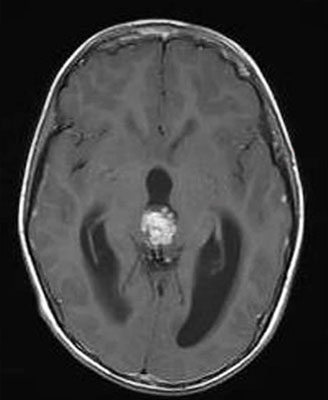|
from GreenMedInfo Website
The Discovery
Research published in 2001 showed that fluoride (F) deposits in the pineal gland with age and is associated with enhanced gland calcification.
Eleven aged cadavers were dissected and their pineal glands assayed:
What Is The Pineal Gland?The pineal gland is a small endocrine gland in the vertebrate brain, and is sometimes called the "third eye" as it is a light sensitive, centrally-located organ with cellular features resembling the human retina.
One article describes the role of the pineal gland in more technical terms here:
The pineal gland is best known for its role in producing the hormone melatonin from serotonin (triggered by the absence of light) and affects wake/sleep patterns and seasonal/circadian rhythms.
Like a tiny pea-sized pine cone it is located near the center of the brain, between the two hemispheres and is a unique brain structure insofar as it is not protected by the blood-brain-barrier.
This may also explain why it is uniquely sensitive to calcification via fluoride exposure. More Than An Endocrine GlandTechnically the mammalian pineal gland is neural tissue, and the cells within the pineal gland - the pinealocytes - have characteristics that resemble the photoreceptor cells in the retina.
This has given rise to the opinion that it should be reclassified:
The pineal gland has been a subject of much interest since ancient times. Galen described it in the 3rd century, and the philosopher René Decartes (1596-1650) identified the pineal gland as the "seat of the soul."
His explanation for this conclusion is quite interesting:
Decartes was one of the few philosophers who was experienced in vivisection and anatomy, and who rightly pointed out the unique nature of the pineal gland's location in the brain and blood supply.
The "third eye" is also a well known symbol in Eastern literature, and may be concretely grounded in the anatomical structure and function of the pineal gland. Calcium Stones In the Brain
Pineal gland calcifications upon dissection resemble gravel, and are composed of calcite (calcium carbonate) and/or calcium hydroxylapatite, the latter of which is not unlike dentin or bone. (Source)
Pineal gland calcification is associated with a number of diseases in the medical literature:
Fluoride As A "Therapeutic" Neurotoxin?
Now that it has been established that fluoride (F) exposure contributes to the calcification of the pineal gland, the question remains: what are the subjective affects of these tissue changes to those who undergo them?
Prozac may represent an archetypal example of how fluoride affects the personality/soul.
This drug (chemical name fluoxetine) is approximately 30% fluoride by weight and marketed as an "antidepressant," even while a major side effect of its use and/or withdrawal is suicidal depression.
Modern psychiatry often treats depressive disorders - the "dark night of the soul" - as an organic disorder of the brain, targeting serotonin reuptake by any chemical means necessary. Fluoride and fluoxetine, in fact, may accomplish their intended "therapeutic effects" by poisoning the pineal gland.
Animal studies confirm that when mice have their pineal glands removed they no longer respond to fluoxetine.
Perhaps the primary reason why Prozac causes a favorable reaction in those who are treated (poisoned) with it, is that it disassociates that person from the psycho-spiritual conflicts that they must normally suppress in order to maintain the appearance of sanity and functionality in society, i.e. it is control and not health that is the goal of such "treatment."
If Prozac and other sources of fluoride in our environment deposits within the pineal gland, accelerating the transformation of functional pineal tissue into calcification, is it possible that it works by dehumanizing and flattening the affect of those who are under its influence?
How Do We Prevent Pineal Gland Calcification?
Eliminating exposure to fluoride is the #1 priority.
We can start by being careful about surreptitious forms of fluoride in Teflon, foods and beverages produced with municipal water, tap water, infant formula, fluoride containing drugs like Prozac, toothpaste, etc.
We have collected a number of studies from the US National Library of Medicine on natural substances which mitigate fluoride toxicity.
We also have a section on our database dedicated to finding substances which prevent or reverse other forms of pathological calcification which may have relevance for pineal gland calcification, such as ectopic calcification.
Lastly, there is research on the potential value of magnesium and phytate in reducing pineal gland calcification.
|

